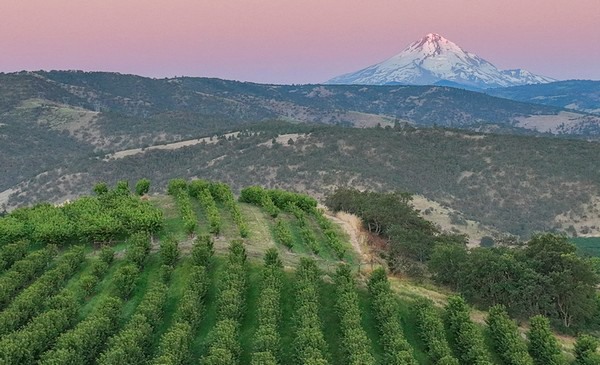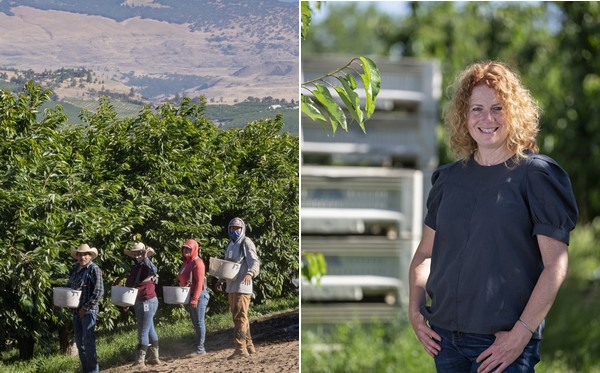While one grower in The Dalles, Oregon is hitting its 100-year anniversary this year, its president, Brenda Thomas, has the crop on her mind. “We have to get through harvest first,” she says. “The focus is to take care of everybody that’s working for us, take care of the cherries and when the dust settles after harvest, we’ll celebrate.”
 Harvest got underway for Orchard View late last week.
Harvest got underway for Orchard View late last week.
Production is just getting underway for Orchard View with harvesting and the packing house just up and running late last week. “We have an average start date of June 15. Blossom was later but we just do what the trees tell us,” says Thomas. “Usually it’s about seven weeks of harvest but it depends on how warm or cool it’s going to be. If it’s hotter, we get more compression and if it’s cooler, it’s going to be longer.”
She does say that the good news is this year, there is a good crop compared to last year’s cherry season. “We actually have cherries to take care of. After two years of difficult crops, it feels really good to have a more typical crop on the trees,” says Thomas.
Orchard View will begin with Chelans and finish with Sweethearts with Bings, Lapins and Sweethearts making up the volume of cherries that are shipped. “There are about 20 varieties in between that are specialty varieties and the varieties that we’re trying out,” says Thomas.
More affordable fruit
To meet what looks to be a good crop is likely strong demand. “I would hope there’s pent-up demand because last year was expensive because it was a short crop,” she says. “Maybe this year will be more affordable, and we know they will taste good, so would be a good buy.” As for pricing, it should look better than last year’s higher prices.
What is unknown ahead is how the overlap between Pacific Northwest cherry production and California, which saw a late start to their season, will play out. “I also know that when you get started you think you know what the story is going to be and with cherries it’s always a different story. You usually don’t know what the stresses are going to be until you get started,” says Thomas.
 “We actually have cherries to take care of. After two years of difficult crops, it feels really good to have a more typical crop on the trees,” says Thomas.
“We actually have cherries to take care of. After two years of difficult crops, it feels really good to have a more typical crop on the trees,” says Thomas.
Behind that knowledge is 100 years of company experience. In that time, one significant difference Thomas has since seen she was a child is the growing of processing cherries. “We used to raise processing cherries for maraschinos, etc. Now the only reason we plant a tree is for fresh cherry consumption. It’s a total transformation of how we grow, how we harvest and now we pack all our own fruit,” she says.
As for what further changes are ahead in the cherry-growing industry, that remains to be seen. “Though the 100-year milestone is just the beginning for the next 100 years,” says Thomas. “Farming is a continual cycle of good and bad years and while 100 years is an exciting milestone our eyes are focused on the future.”
 For more information:
For more information:
Kelsey Van Lissum
Oppy
Tel.: +1 (604) 461-6779
[email protected]
www.oppy.com
